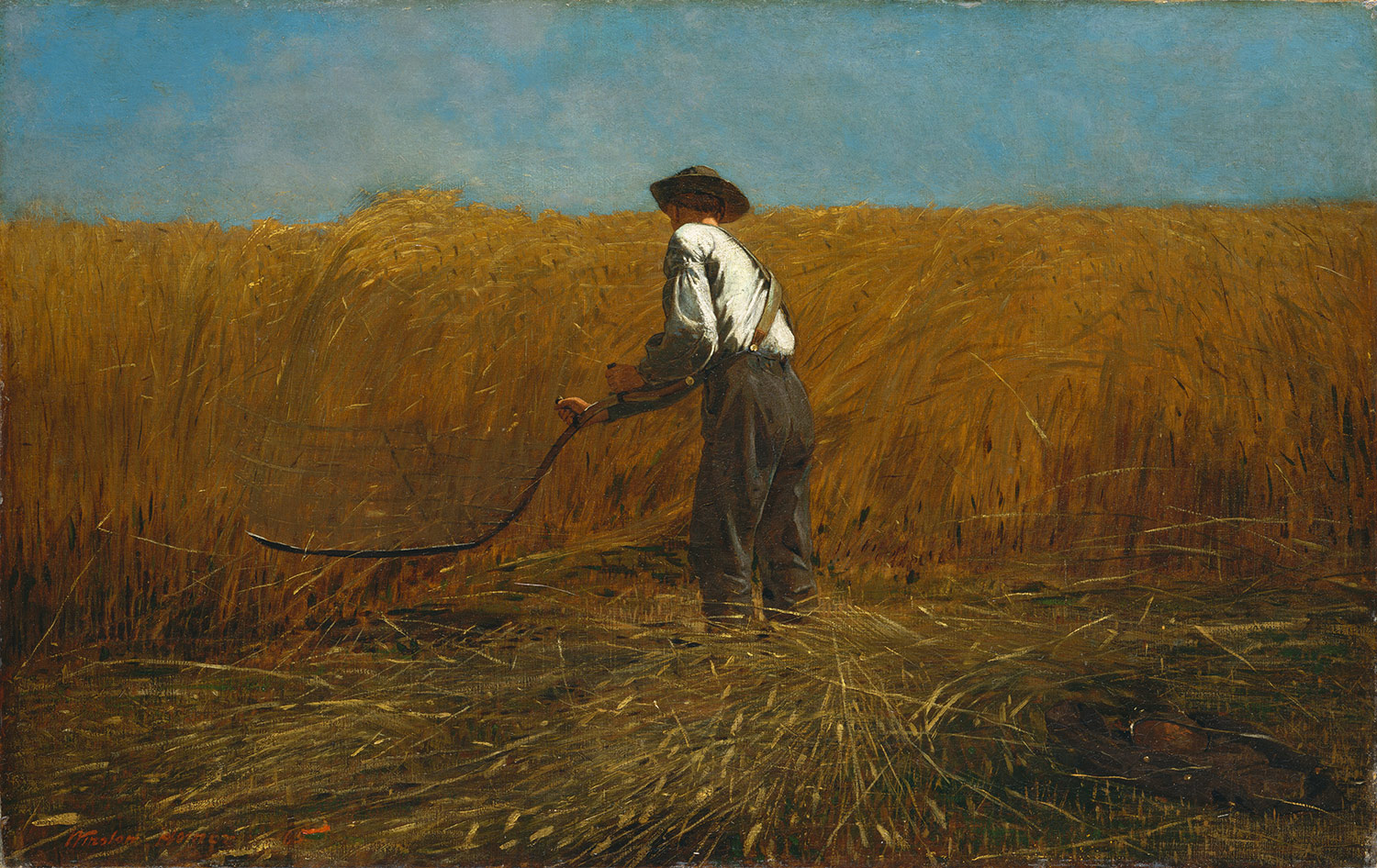 |
|
The Veteran in a New Field, 1865, Winslow Homer
|
I’m preparing a drawing of a wheat field with hail damage. I started by considering the greatest wheat field painting I know. Winslow Homer’s The Veteran in a New Field is surely one of the iconic paintings of American history.
Homer painted this in the summer of 1865, immediately following the end of the Civil War and President Abraham Lincoln’s assassination. We understand the farmer to be a Union veteran by his jacket and canteen at the lower right. Holding his scythe, he is at once the Grim Reaper and the man returned to civilian life. He grieves, and yet he has returned to life. There has been no greater work ever painted on the wages of war.
| My sketch for a wheat field with hail damage. Homer’s painting tells us me that it doesn’t need to be complicated; in fact, I’m not sure a painting of a wheat field can be complicated. |
You learn something every time you look at a painting. Surely no wheat has ever reached the height of that in this painting. Even Timothy-grass, the tallest component of hay, seldom reaches these heights in the Northeast, but the golden color of the stalks tells us this is no hay-field.
 |
|
Another favorite field painting: Jules Bastien-LePage’s Haymaking (Les Foins), 1877. The look of blank exhaustion in their faces is recognizable to anyone who has worked hours under a hot summer sun.
|
And I was just worrying because in my next sketch I’m pointing something that faces east decidedly to the north. Well, if Homer can get away with wheat that tall, perhaps I can reconfigure the Maine coastline.
Let me know if you’re interested in painting with me in Maine in 2014 or Rochester at any time. Click here for more information on my Maine workshops!
